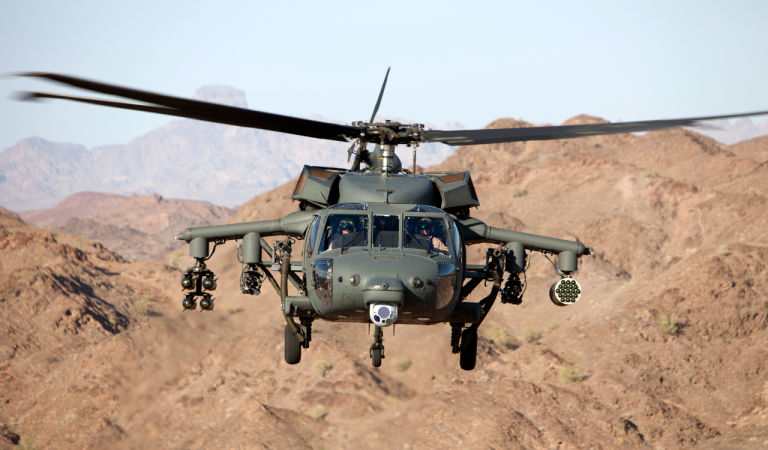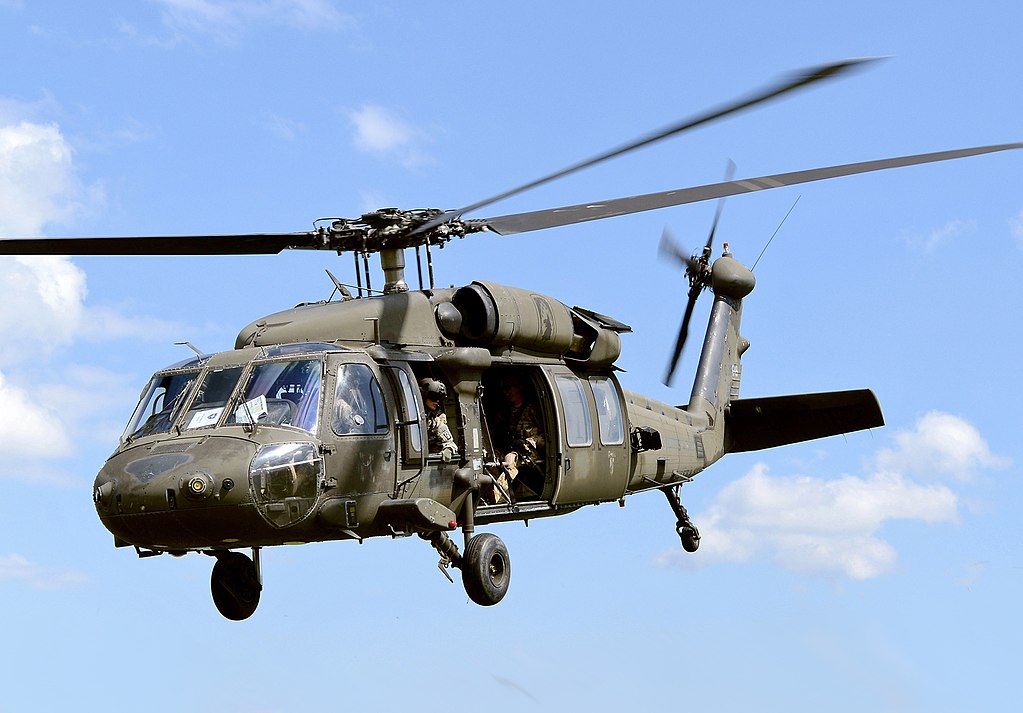Exactly how the UH 60's Flexibility Sustains Both Combat and Altruist Efforts
Exactly how the UH 60's Flexibility Sustains Both Combat and Altruist Efforts
Blog Article
UH-60: Technologies in Modern Helicopter Layout
The UH-60 helicopter stands as a benchmark in modern aeronautics, showcasing significant innovations in layout and innovation that cater to the progressing demands of military operations. As we check out the development and essential developments of the UH-60, it becomes essential to think about how these advancements influence not just current applications but likewise the future landscape of helicopter design.

Development of the UH-60
The development of the UH-60 Black Hawk helicopter stands for a substantial turning point in aerospace engineering and army aeronautics. Presented in the late 1970s, the UH-60 was designed by Sikorsky Airplane to satisfy the USA Military's demand for a functional utility helicopter capable of executing a variety of goals. Its design highlighted speed, durability, and ability to move, establishing brand-new requirements for operational performance.
The UH-60 features an unique four-blade blades system, which improves lift and security, allowing it to run properly in varied atmospheres. Its airframe is built from sophisticated composite materials, adding to a reduction in weight while preserving architectural honesty. The helicopter's style also includes improved the rules of aerodynamics, which improves fuel effectiveness and increases variety.
Throughout the years, the Black Hawk has undertaken multiple upgrades to enhance its abilities, including enhanced engines, progressed trip control systems, and modular systems for very easy upkeep and versatility. The helicopter's capacity to execute objectives ranging from troop transport to clinical emptying has strengthened its role as a foundation of united state army operations. The UH-60 Black Hawk continues to be a prime example of how technology in helicopter style can considerably impact military effectiveness and operational adaptability.
Advanced Avionics Equipments
Innovations in avionics systems have changed the capacities of modern-day helicopters like the UH-60 Black Hawk, boosting operational effectiveness and situational awareness (UH 60). The assimilation of advanced avionics allows for improved navigating, interaction, and flight management, making the UH-60 a lot more versatile in diverse objective profiles
One of the key attributes is the innovative electronic cockpit, which utilizes multifunction display screens that supply real-time data, guaranteeing pilots have immediate access to important trip details. This streamlining of information decreases pilot work and improves decision-making procedures throughout complex operations. In addition, the incorporation of general practitioner and inertial navigation systems enables precise positioning and path planning, boosting goal implementation in difficult environments.
Moreover, progressed avionics systems enhance interaction capabilities through secure information web links and voice interaction systems, enabling seamless control with ground pressures and other airplane. The integration of automated flight control systems further adds to boosted security and control, especially in adverse weather condition problems or during low-altitude maneuvers.
Engine and Efficiency Enhancements
Engine efficiency in modern helicopters has actually taken a considerable leap forward, driven by advancements that enhance dependability, performance, and power. At the forefront of these innovations is the fostering of more powerful turboshaft engines, especially those using innovative materials and technologies that enable higher temperature level tolerances and raised thrust abilities. The UH-60 Black Hawk, for circumstances, utilizes the T700-GE-701C engine, which includes a dual-channel, full-authority electronic engine control system. This system improves performance while maximizing fuel consumption and decreasing upkeep demands.
Moreover, the combination of engine health monitoring systems permits real-time diagnostics and anticipating maintenance, substantially enhancing operational dependability. These systems not only alert teams to potential issues prior to they become critical but additionally promote extra efficient maintenance scheduling, thereby minimizing downtime.

Products and Structural Innovations
Current growths in materials and architectural style have reinvented contemporary helicopter construction, enhancing both performance and longevity. The intro of innovative composite materials, such as carbon fiber reinforced polymers, has actually dramatically decreased weight while preserving architectural integrity. This shift not only improves fuel performance however also boosts payload ability, permitting helicopters like the UH-60 to execute even more diverse missions.
Furthermore, innovations in aluminum alloys and titanium elements have actually contributed to improved resistance to deterioration and tiredness, expanding the life-span of essential airframe aspects. The calculated use these products has actually brought about a decrease in upkeep needs and boosted overall operational readiness.

In addition, the combination of computer-aided design (CAD) and additive manufacturing innovations has allowed extra lightweight frameworks and complex geometries, optimizing the wind resistant performance of helicopter designs. These advancements facilitate rapid prototyping and manufacturing, enabling makers to respond swiftly to progressing mission requirements.
Safety And Security and Survivability Functions
Safety and security and survivability features in contemporary helicopter design have actually become extremely important, mirroring the increasing needs for goal efficiency in challenging atmospheres. The UH-60 Black Hawk, a noteworthy example, integrates advanced technologies to improve team and guest security.
The helicopter also utilizes a ballistic defense system, which consists of armored crew seats and essential systems shielding, minimizing susceptability to additional hints small arms fire and shrapnel. Boosted situational understanding is accomplished via sophisticated avionics and sensor technologies, allowing pilots to detect and stay clear of threats effectively.
Moreover, the assimilation of redundancy in important systems-- such as double engines and multiple trip control networks-- makes certain ongoing procedure also if one system stops working. The UH-60 is outfitted with advanced emergency situation flotation protection tools, improving survivability in water landings. Collectively, my sources these attributes not just improve the safety of workers but additionally raise objective success rates in hostile atmospheres, showing the dedication to excellence in helicopter style.
Conclusion
The UH-60 helicopter stands for a substantial innovation in modern-day air travel innovation, integrating ingenious materials, innovative avionics, and robust safety functions. Its evolution reflects a dedication to improving efficiency and functional effectiveness while making certain pilot and crew survivability. The combination of light-weight compounds and progressed navigating systems emphasizes the helicopter's flexibility in various military missions. Generally, the UH-60 serves as a criteria for future growths in helicopter style, personifying strength and versatility in modern army operations.
The UH-60 helicopter stands as a benchmark in modern-day air travel, showcasing significant developments in layout and innovation that provide to the advancing needs of army procedures. As we discover the advancement and crucial advancements of the UH-60, it becomes vital to think about how these developments influence not only existing applications yet additionally the future landscape of helicopter design.
Presented in the read the full info here late 1970s, the UH-60 was created by Sikorsky Airplane to fulfill the United States Military's need for a flexible energy helicopter capable of performing a range of objectives. The UH-60 Black Hawk stays a prime instance of how advancement in helicopter layout can considerably impact armed forces efficiency and operational adaptability.
Overall, the UH-60 serves as a benchmark for future advancements in helicopter layout, embodying durability and flexibility in modern armed forces operations.
Report this page